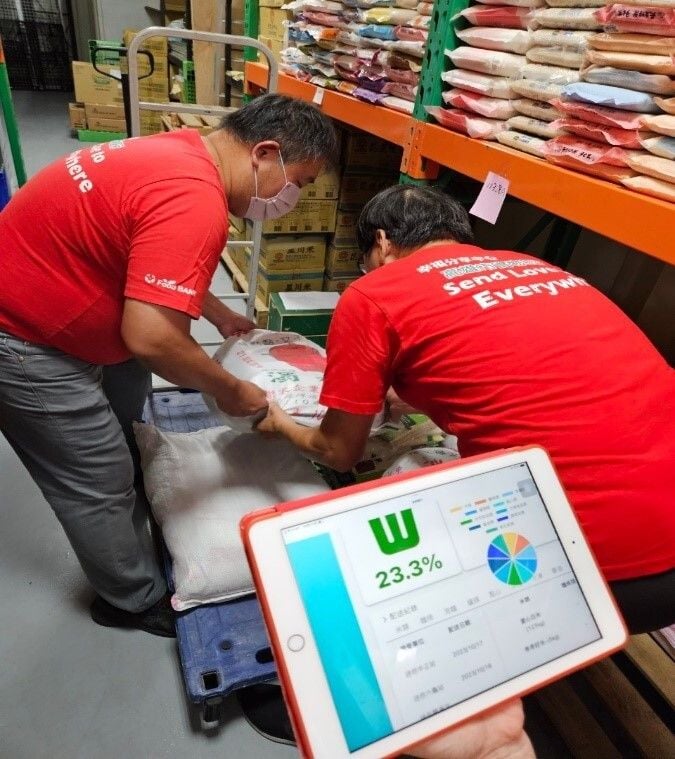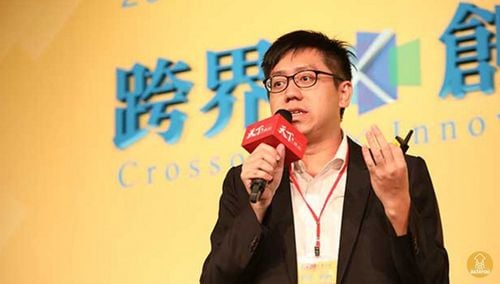【2024 Application Example】 [2023 Case Study] AI Steps into Philanthropy: Stylish Tech at Food Banks
| Taiwan Food Bank Association(Hereinafter referred to as 'the Association')With the mission of providing food aid, poverty relief, reducing food waste, and building a hunger-free network, there are locations across Taiwan that gather donations from wholesalers, intermediaries, retailers, manufacturers, and even generous individuals. These sites also rescue food that would otherwise be discarded, properly allocate and distribute it to needy households, thus aiding local vulnerable families.55Food banks at various locations collect daily donations from wholesale stores, intermediaries, retailers, manufacturers, and even benevolent individuals from all over Taiwan. These places also rescue about-to-be-discarded edible materials, properly sort them, and distribute to needy households, assisting local vulnerable populations.
However, each location requires significant human and volunteer resources to manage daily operations using traditional methods of communication with non-profit organizations and donors. After receiving donations, these resources are then allocated to needy families or individuals. There is a potential issue of uneven distribution of resources due to a lack of digitalization and integrated information management in these processes.
|
| Warehouse and Transportation Centers and Mini Food Banks Distributing Resources to the Disadvantaged The location under validation by the Kaohsiung Charitable Organizations Association,(Hereinafter referred to as 'Kaohsiung Charity') In109year6month24Officially inaugurated Taiwan's first 'Food Bank-Warehouse and Transportation Center' at a location measuring200square meters, enhancing the efficiency of food resource redistribution, proper storage, and management. So far, nearly two hundred tons of vegetables and fruits have been saved, serving over a hundred organizations and benefiting over5thousand vulnerable households, and continues to serve19mini food banks, with planned completion across multiple districts in Kaohsiung, distributing food resources to over10ten thousand vulnerable families.

Challenges in Labor and Food Resource Management Facing the needs of a large number of economically disadvantaged families, the management of the 'Food Bank-Warehouse and Transportation Center' is particularly critical. During procurement, tasks such as sorting, purging, and bookkeeping must be performed, while during shipment, food resource needs suggested by social workers must be followed. These activities rely on manual judgment and accumulated experience. Many volunteers involved are elderly and have limited physical strength, making warehouse tasks physically demanding and recruitment challenging. If a large batch of food resources arrives, space and manpower are consumed in sorting and inventory management, raising concerns about the effective use of resources and turnover rate. This highlights the challenge of scaling up food bank services while lacking corresponding labor and material management systems. At the same time, food bank resources come from various donations, thus they vary greatly in type, shelf life, standards, and quantity. Volunteers at mini food banks, mostly also elderly, must handle multiple responsibilities such as case services, food resource management,/resource allocation, and resource development. Sometimes they must also explain and accept immediate, large quantities of specific resources, such as adults receiving baby formula.

|
| Reducing Scrap Resources60% Increasing Speed of Resource Transfer80% To enhance resource management and ensure effective use of materials, and to address personnel shortages, this field validation case has introduced 'Food Bank Warehouse Resource CollectionAITo advance resource management, ensure effective use of resources, and solve manpower shortages, this validation site has implemented an 'Automated Early Warning Needs Assessment System' for the food bank's warehouse resource gathering. The first part involves building a classification model, setting up and collecting warehouse information at the site, andAItraining the model. Past site/warehouse information is collected and stored in a database, allowingAIfor preprocessing, classification, and other tasks. At the same time, depending on the dependency conditions of the types of goods as features, algorithms are introduced for computation and modeling, and the data collected is used for retraining, ultimately validating the field and organizing data for the five most common types of goods into training and test datasets as required. The second part involves constructing the classification model using AI techniques; further use of reinforcement learning constructs the management mechanism for the food bank's warehouse, perfecting the classification of donated goodsRNNTechnical construction of classification models; further use of reinforcement learning constructs food bank warehouse management mechanisms, making the classification of donated goods perfect(like white rice, instant drinks, noodles, instant noodles, and canned goods)can then be automatically assigned storage based on storage assignment principles.

AtAIUnder forecasts, it can optimize the speed of resource transfer and allocation, effectively and accurately match resource donations reducing the loss in the donation process, increase the accuracy of resource distribution, and improve the service rate(—the successful donation rate)—reducing the waste of resources due to incorrect items, and enabling instant monitoring of food resource stock, ensuring operators can respond quickly to needs, effectively providing resource assistance. WithAIthe system's introduction and the establishment of data intelligence, it helps the operations of the warehouse and transportation center, allowing more time for the allocation of donated goods. The introduction aims to accelerate the digital service rollout for social welfare organizations, thoroughly addressing the needs of the overall vulnerable segments of society.
 |
| Following this field validation, it is possible to expand the system to other food bank service pointsAIThe system can also collaborate with more non-profit organizations, public welfare groups, and charitable organizations, expanding 'Food Bank Warehouse Resource CollectionAIAutomated Early Warning Demand Assessment System' application range such as medical supply distribution, helping more organizations manage and distribute more intelligently, reducing resource wastage, and enhancing social welfare. |
「Translated content is generated by ChatGPT and is for reference only. Translation date:2024-12-12」


